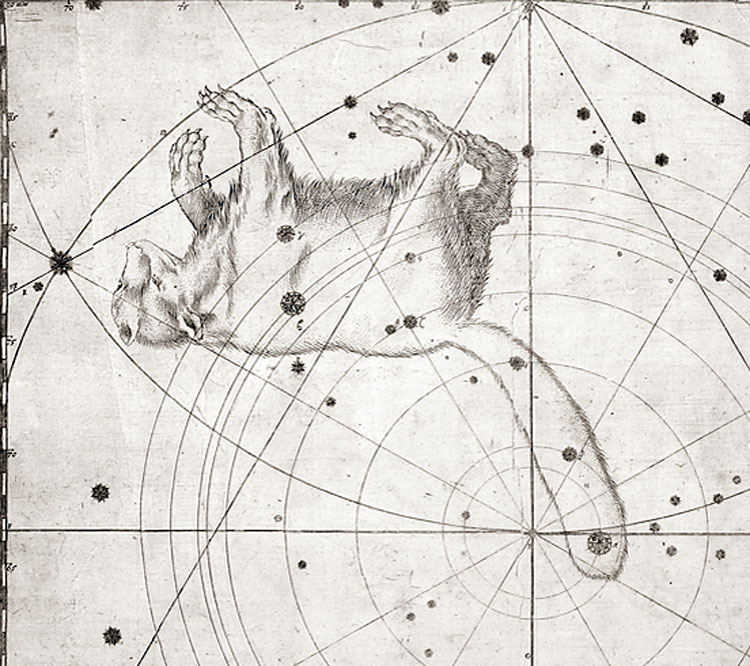

and images that appeared on celestial globes and in the painted pages of Late Antique manuscripts. This chapter examines the type of astronomical and astrological images that decorated Roman public buildings, temples. Many volumes have been written on the transmission of astronomical knowledge from ancient Greece through the Middle Ages to the time of Copernicus, Kepler, and Newton but much less has been written about the celestial images that often accompanied that astronomical literature. The first celestial maps in the mathematical tradition also emerged in the early fifteenth century foreshadowing the modern period in celestial cartography in the Western World. The constellation design of Islamic globes stands out from later western globes made in the early fifteenth century by the way constellations are drawn on a sphere. The construction of globes varied greatly as it passed from Greece to the Arabic and Medieval European cultures. The complete absence of celestial maps other than the retes of astrolabes in the Islamic tradition is a puzzle that needs further study. The cultural impact of globes is echoed in the oldest known ceiling painting of the celestial sky in the bath house of Qusayr cAmra built in the first half of the eighth century. Although no antique celestial maps have survived medieval copies of them are included in illustrated astronomical books such as the Latin translation of Aratus's Phaenomena describing how the constellations are located with respect to each other. The globe was also the starting-point for the construction of maps in antiquity.

Invented by the Greeks as a scientific instrument imitating the phenomena such as the rising of the setting of the stars and precession, it became soon used in antiquity in education to circumvent the complicated mathematics of the sphere, and by artists for decorative purposes symbolising the world at large. The globe is the most deceptive of all early scientific instruments. The introduction in antiquity of the moving sphere as a model for understanding the celestial phenomena provided the momentum for making celestial globes and mapping the stars. But first, a word about the conventions that will be used. In this chapter, I will deal with four individuals who are considered to be the most influential during this period for the standards they set and their influence on others. Some of these are truly works of art and will be described in Chapter 7.

Now, maps of the heavens could be both aesthetically pleasing and technically accurate, and mapmakers increasingly competed with each other to produce bigger and better star atlases. Paralleling developments in terrestrial mapmaking, the use of coarse woodblocks gave way to intaglio processes in celestial maps that allowed fine images on copper and steel plates to be reproduced as fine images on paper. In addition, the rapid advances in printing techniques since the development of movable type procedures in the 1450s led to the ability to depict images with more detail and accuracy. Exemplified by Astronomer Royal John Flamsteed, telescopes and micrometers were added to these instruments, which made their positioning even more accurate. Using bigger and better instruments, Tycho Brahe and Johannes Hevelius determined the locations of the stars using naked eye observations. These were influenced by increasingly more accurate placement in new star catalogs that built on that of Ptolemy. During this period, grand sky atlases were produced that attempted to accurately place the stars and planets in the heavens in coordinate systems that paralleled those on Earth. The Golden Age of celestial cartography with constellation images took place in Europe, roughly from 1600 to 1800.


 0 kommentar(er)
0 kommentar(er)
